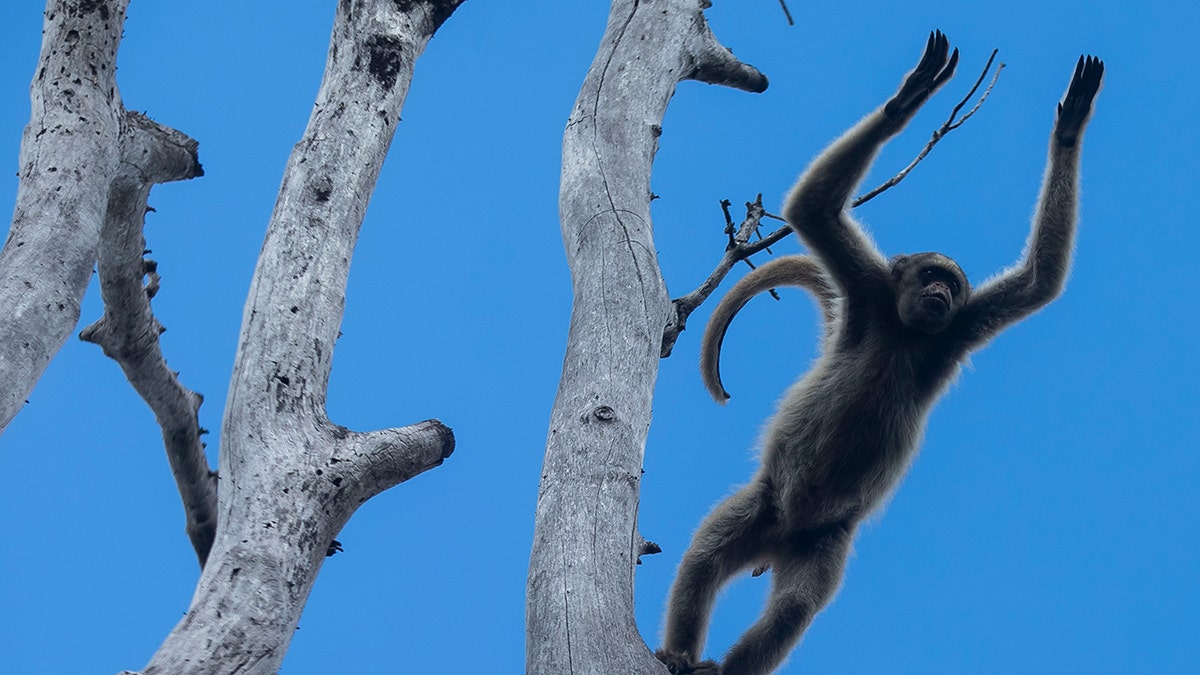Deep within the vibrant Atlantic forest of southeastern Brazil, a troop of graceful, golden-gray monkeys navigates the emerald canopy. This is the realm of the northern muriqui, the largest monkey in the Americas, and a species once teetering on the brink of extinction. Forty years ago, biologist Karen Strier embarked on a remarkable journey to study and protect these unique primates, a journey that continues to this day.
Strier's initial encounter with the northern muriqui was a transformative experience. "I was captivated by their beauty, grace, and even their cinnamon-like scent," she shared. This profound connection fueled her dedication to understanding and conserving the species, leading to one of the world's longest-running primate studies.
At the time, little was known about the northern muriqui, other than its precarious status. Extensive deforestation had decimated its habitat, leaving isolated populations struggling to survive. Strier's research revealed a primate remarkably different from the more aggressive chimpanzees and gorillas studied by renowned primatologists like Jane Goodall and Dian Fossey.
Unlike their combative counterparts, northern muriquis exhibit remarkably peaceful social interactions. Males rarely engage in physical confrontations, opting instead for avoidance, waiting, or even embracing. This gentle nature has earned them the endearing nickname "hippie monkeys." They also play a vital ecological role as "forest gardeners," dispersing seeds from fruits high in the canopy.
Strier's research also highlighted the unique gender dynamics within muriqui society. Females, similar in size to males, possess significant autonomy, actively choosing their mates. This contrasts with the male-dominated hierarchies observed in many other primate species.

The Feliciano Miguel Abdala reserve, a 2,300-acre sanctuary where Strier has conducted her research, has witnessed a remarkable resurgence of the northern muriqui population, growing from a mere 50 individuals to over 232. This represents approximately one-fifth of the entire species' population.
However, the journey has not been without its challenges. Drought and a yellow fever outbreak tragically decimated a significant portion of the reserve's muriqui population. This underscored the vulnerability of the species and reinforced the urgent need for habitat connectivity and reintroduction programs.
One such initiative, led by Strier's former student Fernanda Pedreira Tabacow, focused on a small, isolated group of muriquis facing imminent extinction. By carefully introducing females and creating a protected breeding environment, they achieved a significant breakthrough with the birth of a new infant muriqui. The ultimate goal is to reintroduce this growing group back into the wild.
As Strier celebrates four decades of unwavering dedication to the northern muriqui, her work stands as a testament to the power of long-term research and conservation efforts. Her tireless advocacy for forest corridors and habitat restoration continues to be crucial for the survival of these gentle primates. The fight to protect the "hippie monkeys" is far from over, but thanks to Strier's unwavering commitment, their future holds a glimmer of hope.








